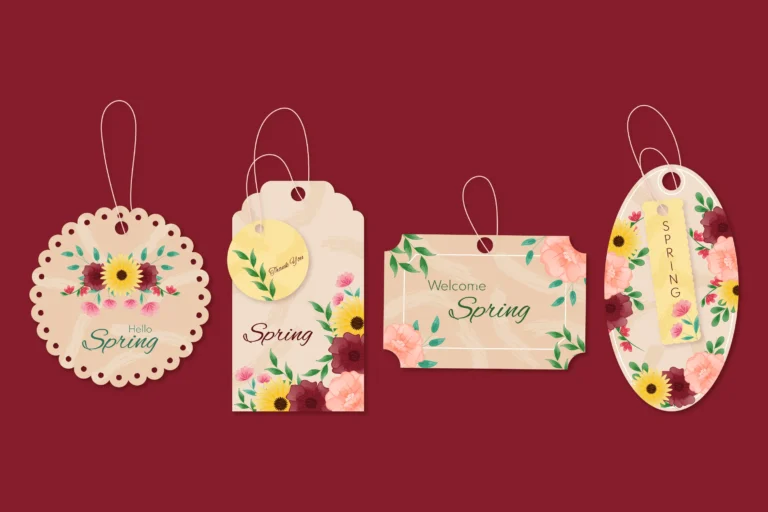Packaging is not just about wrapping a product-it’s a vital part of your brand experience, product protection, and sustainability goals. Whether you’re a clothing manufacturer, retailer, or online seller, choosing the right garment packaging can make a significant difference in how your products are perceived and preserved. Here’s your complete guide to making the best packaging choices for your apparel business.
Why Garment Packaging Matters
The right packaging protects garments from dust, moisture, and damage during storage and transit. It also communicates your brand values, enhances the unboxing experience, and can even influence a customer’s purchase decision. With growing focus on sustainability and branding, garment packaging is more important than ever.
Types of Garment Packaging
There are several packaging forms used in the apparel industry, each with unique benefits for different business needs:
1. Poly Bags
Plain Poly Bag: The most common and cost-effective option, used for individual garment packing. Offers protection from dust and moisture.
Gazetted Poly Bag: Features self-adhesive closures and expandable sides for bulkier items or multiple garments.
Poly Bag with Hanger: Designed for garments that need to remain wrinkle-free, often used for retail display.
Pros: Lightweight, waterproof, affordable
Cons: Not biodegradable unless made from recycled or compostable materials
2. Paper and Cardboard Packaging
Paper Mailers: Biodegradable and recyclable, ideal for eco-conscious brands. Suitable for lightweight apparel and can be custom-printed for branding.
Cartons and Boxes: Used for shipping multiple garments or bulky items. Corrugated cardboard offers excellent protection and can be fully customized.
Pros: Sustainable, customizable, sturdy
Cons: Less water-resistant, may cost more than plastic
3. Textile Packaging
Tote Bags and Cloth Bags: Made from cotton, jute, or canvas. Reusable and biodegradable, often used for luxury or eco-friendly brands.
Pros: Reusable, premium look, eco-friendly
Cons: Higher cost, less protective against moisture
4. Specialty Packaging & Accessories
Gift Bags: Enhance the customer experience for retail and gifting.
Back Support Boards, Collar Bands, Butterflies: Used to maintain garment shape and presentation, especially for shirts and formalwear.
Mailers (Poly or Paper): Used for shipping, with options for added protection like bubble lining.
How to Choose the Right Packaging for Your Garments
Selecting the best packaging depends on several important factors:
1. Product Type & Protection Needs
Delicate or high-end garments (like dresses, suits): Use structured boxes, back support boards, or specialty poly bags with hangers for shape retention and presentation.
Casual or lightweight items (like t-shirts): Poly mailers or paper mailers are cost-effective and protective.
Bulk shipments: Corrugated cartons or shipping boxes are ideal for transporting large quantities safely.
2. Brand Image & Customer Experience
Custom Printing: Use branded boxes, bags, or tissue paper to reinforce your brand identity and create a memorable unboxing experience.
Eco-Friendly Materials: Appeal to environmentally conscious customers with recycled, biodegradable, or reusable packaging options.
3. Sustainability Goals
Paper & Cardboard: Opt for FSC-certified, recycled, or biodegradable materials to reduce environmental impact.
Compostable/biodegradable plastics: Consider these for poly bags to combine protection with sustainability.
Reusable Textile Bags: Offer as a premium or gift option for added value and brand loyalty.
4. Cost & Logistics
Lightweight Packaging: Poly mailers and paper bags reduce shipping costs, especially for e-commerce.
Durability: Ensure packaging can withstand handling and transit to minimize returns and damaged goods.
Common Garment Packaging Materials: Pros & Cons
| Material | Pros | Cons |
|---|
| Poly Bags | Waterproof, lightweight, affordable | Not eco-friendly unless recycled |
| Paper/Cardboard | Biodegradable, customizable, sturdy | Less water-resistant, costlier |
| Textile Bags | Reusable, premium, eco-friendly | Expensive, less moisture protection |
| Bubble Mailers | Extra protection, lightweight | Not always recyclable |
Tips for Effective Garment Packaging
Test your packaging: Ensure it fits your products, protects them, and looks professional.
Use branded elements: Custom labels, stickers, or tissue paper can elevate your brand.
Balance sustainability and function: Choose the most eco-friendly option that still meets your protection and cost needs.
Stay updated: Packaging technology and materials are evolving-review your choices regularly for improvements.
Conclusion
Choosing the right packaging for garments is about more than just protection-it’s a strategic decision that impacts your brand, customer satisfaction, and environmental footprint. By understanding your product needs, brand goals, and available materials, you can select packaging that delights customers and supports your business growth.
Looking for expert garment packaging solutions? Contact Joy Packaging & Accessories Co. for custom, sustainable, and effective packaging tailored to your brand.




